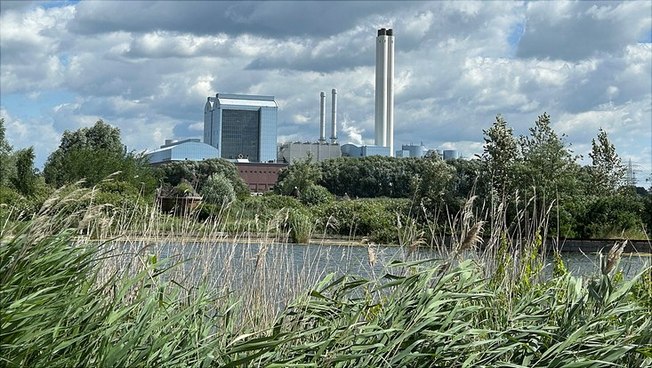Simulations uncover cause of "surprising" tsunami 2018 in Sulawesi
3 September 2019, by Gauss Centre for Supercomputing / CEN Universität Hamburg

Photo: Tony Webster
An international team of geologists, geophysicists, and mathematicians show how coupled computer models can accurately recreate the conditions leading to the world’s deadliest natural disasters of 2018, the Palu earthquake and tsunami, which stroke western Sulawesi, Indonesia. Jörn Behrens, an expert in tsunami modelling from the Center of Earth System Research and Sustainability (CEN) at Universität Hamburg also contributed to the work that was newly published in Pure and Applied Geophysics.
The tsunami was as surprising to scientists as it was devastating to communities in Sulawesi. It occurred near an active plate boundary, where earthquakes are common. Surprisingly, the earthquake caused a major tsunami, although it primarily offset the ground horizontally. This is indeed surprising, because large-scale tsunami are typically caused by vertical motions.
Researchers were at a loss—what happened? How was the water displaced to create this tsunami: by landslides, faulting, or both? Satellite data of the surface rupture suggests relatively straight, smooth faults, but do not cover areas offshore, such as the critical Palu Bay. What is then the shape of the faults beneath Palu Bay and is this important for generating the tsunami? This earthquake was extremely fast. Was speed also critical to source the tsunami?
Using a supercomputer operated by the Leibniz Supercomputing Centre, the team showed that the earthquake-induced movement of the seafloor beneath Palu Bay itself could have generated the tsunami. That is the contribution of landslides is not required to explain the tsunami main features. The team suggests an extremely fast rupture on a straight, tilted fault within the Bay. In their model, slip is mostly lateral, but also downward along the fault, resulting in anywhere from 0.8 m to 2.8 m vertical seafloor change that averaged 1.5 m across the area studied. Critical to generating this tsunami source are the tilted fault geometry and the combination of lateral and extensional strains exerted on the region by complex tectonics.
The scientists come to this conclusion using a cutting-edge, physics-based earthquake-tsunami model. Professor Jörn Behrens and Stefan Vater (now FU Berlin) developed the high-resolution and efficient simulation of tsunami wave propagation and inundation at the CEN of Universität Hamburg. "Our sophisticated simulation as well as our long standing experience in tsunami simulation, especially in Indonesia, allowed us to reproduce the catastrophic situation along the regional coastlines very well", says Jörn Behrens.
The earthquake model in particular is physically consistent and mechanically viable. In other words, the earthquake rupture process is not unrealistically tuned to finely fit observations, but in contrast offers a realistic scenario compatible with earthquake physics and regional tectonics. The researchers did evaluate the earthquake-tsunami scenario against multiple available datasets. Sustained supershear rupture velocity, when the earthquake front moves faster than the seismic waves near the slipping faults, is required to fit earthquake observations. The modeled tsunami wave amplitudes match the available wave measurements and the modeled inundation heights qualitatively match field observations. This approach offers a rapid, physics-based evaluation of the earthquake-tsunami interactions during this puzzling sequence of events.
“Finding that earthquake displacements probably played a critical role generating the Palu tsunami is as surprising as the very fast movements during the earthquake itself,” said Thomas Ulrich, PhD student at Ludwig-Maximilians-University of Munich and lead author of the paper. “We hope that our study will launch a much closer look on the tectonic settings and earthquake physics potentially favouring localized tsunamis in similar fault systems worldwide.”
Publication
Ulrich T, Vater S, Madden E H, Behrens J, Vandinther Y, Vanzelst I, Fielding E. J, Liang C, Gabriel A-A (2019): Coupled, Physics-Based Modeling Reveals Earthquake Displacements are Critical to the 2018 Palu, Sulawesi Tsunami; Pure appl. Geophys., https://doi.org/10.1007/s00024-019-02290-5
Prof. Jörn Behrens is an expert in tsunami modelling from the Center of Earth System Research and Sustainability (CEN) and leads the ASCETE project (Advanced Simulation of Coupled Earthquake Tsunami Events) running since 2011, which enabled the study just published.


